3D Printing and Traditional Machining
Release time:
2023-05-09
3D printing (3D Printing), also known as additive manufacturing (Additive Manufacturing, referred to as AM), emerged in the 1990 s. Different from the traditional "subtractive" processing method, 3D printing is a technology based on computer software, which establishes a three-dimensional model through design, scanning, etc., and processes discrete materials (powder, wire) in a layer-by-layer manner.
Additive manufacturing-3DPrint
1. Industry Introduction
3DPrint(3D Printing), also known as additive manufacturing(Additive Manufacturing, shortAM)It arose in the nineties of the last century. Different from the traditional "subtractive" processing method,3DPrinting is based on computer software, through the design, scanning and other ways to create a three-dimensional model, in a layer-by-layer overlay of discrete materials.(Powder, wire)A technique of forming.3DPrinting mostly uses spherical powder as a raw material, which is selectively melted by a concentrated heat source and solidified in subsequent cooling to form a print.
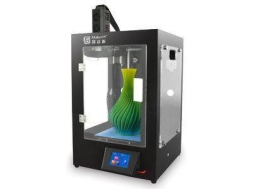
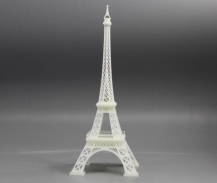
3DPrint 3DPrint Products
3DOne of the main areas of printing isAviationIn the aerospace industry, modern jet engines have thousands of parts, some of which (such as turbine blade diagrams1) Need to follow strict specifications and use a single materialMoldManufacture. Use 3DSome of the engine parts printed are turbocharger wheels, vanes, fuel nozzles and other components.
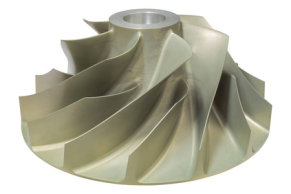
(Figure 1)
2.3DPrinting TechnologyComparedManufacturing advantages of traditional manufacturing technology
The current metalCompared with traditional precision machining technology, 3D printing technology still has a big gap in terms of machinable materials, machining accuracy, surface roughness, and machining efficiency. However, its new technical principles and manufacturing methods also have traditional precision machining. The incomparable huge advantages are embodied in:
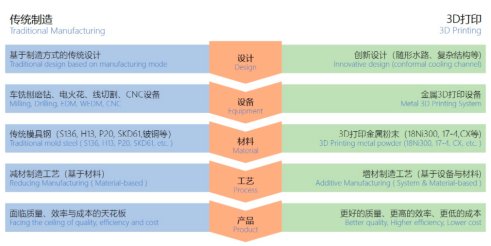
(1) Shorten the new product development and realization cycle. The 3D printing process is directly driven by the three-dimensional model, without the need for auxiliary tools such as molds and fixtures, which can greatly reduce the product development cycle, save expensive mold production costs, and improve the speed of product development iteration.
(2) It can efficiently form more complex structures. The principle of 3D printing is to divide the complex three-dimensional geometry into two-dimensional cross-sectional shapes to laminate manufacturing, so it can realize the traditional precision processing is difficult to achieve complex component forming, improve the yield of parts, while improving product quality.
(3) to achieve integration, lightweight design. The application of metal 3D printing technology can optimize the structure of complex parts. Under the premise of ensuring performance, the complex structure is transformed and redesigned into a simple structure, thereby reducing weight. 3D printing technology can also realize the integration of components. Forming, thereby improving the reliability of products.
(4) The material utilization rate is high. Compared with traditional precision processing technology, metal 3D printing technology can save a lot of materials, especially for more expensive metal materials, which can save a lot of costs.
(5) Achieve excellent mechanical properties. Based on the process characteristics of 3D printing rapid solidification, the internal metallurgical quality of the formed parts is uniform and dense, and there are no other metallurgical defects; at the same time, the characteristics of rapid solidification make the internal organization of the material into a small substructure, and the formed parts can be made without loss of plasticity. The strength is greatly improved.
3.3DPresent Situation of High Temperature Alloy Powder Material Industry for Printing
The preparation methods of spherical powder for 3D printing include gas atomization method, plasma torch atomization method, rotary electric atomization method, carbonyl method, etc. One of the most widely used for gas atomization method.
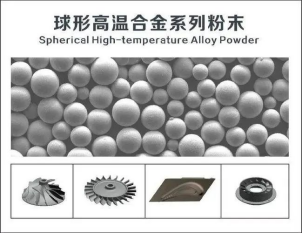
1. Overview of the mechanism of gas atomization preparation of spherical metal powder
AccordingSeeandDombrowskiThe gas atomization process is divided into three stages: primary crushing, secondary crushing, spheroidization and solidification, mainly including air flow distribution, alloy melting, melt crushing, spheroidization, solidification and other processes, gas atomization process and spray photos.(High-speed camera acquisition) is shown in Figure 1. First, the gas flow is accelerated through the atomizing nozzle and forms a stable gas flow field. When the molten metal flow contacts the gas flow, the high-speed and high-pressure gas flow impacts and breaks the liquid flow, converting the kinetic energy of the gas into the surface energy of the metal molten droplets to form fine molten droplets. The droplets fly at high speed under the drag of the airflow, and are spheroidized by the influence of surface tension during the flight, and then rapidly cooled and solidified in the high-speed atomization airflow to obtain spherical powder particles.

Schematic diagram of gas atomization process (a) Spray photo (B)
2. Metal powder materials
in the currentIn the 3D printing industry, metal 3D printing accounts for a considerable proportion, and with the increasing maturity of metal 3D printing technology and the sharp decline in cost, its application scope, depth and scale are constantly breaking through. For example, in the field of aerospace, metal 3D printing has entered the stage of mass production from manufacturing test samples. In the field of dentistry, 3D printing of metal crowns has also become the regular means of dental technicians. In the field of orthopedics, 3D printing of metal implants has begun to be applied on a large scale. Traditional processes are being replaced in the fields of molds, radiators, etc. There is still great application potential in the automobile field waiting to be tapped..
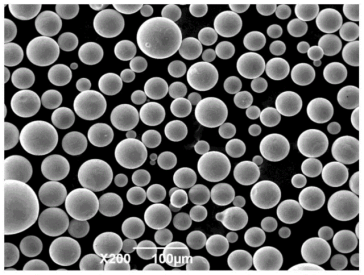
metal powder material
3、high temperature alloy material
Superalloys, also known as superalloys, have good oxidation resistance, corrosion resistance, excellent tensile, durability, fatigue properties and long-term structural stability. They are developed to meet the requirements of modern aerospace technology under various high temperature conditions and show strong vitality in the field of advanced aerospace engines.
Powder metallurgy high-temperature alloy is a high-temperature alloy prepared by powder metallurgy method, compared with the traditional casting and forging high-temperature alloy, with uniform tissue, no macro-segregation, as well as high yield strength, good fatigue performance and other advantages, to overcome the regular process of segregation.(uneven), each particle of the pre-alloyed powder used is a "micro ingot", alloy segregation can only occur in the fine range of powder particles, can improve the overall performance of the alloy, and can reduce the amount of cutting, improve the utilization of the alloy. Especially with the increasing complexity of high-temperature alloy composition and the increasing size of parts, powder metallurgy high-temperature alloys show greater advantages..
4.3D printingindustry development trend
1、The demand for industrial financing is urgent, and the scale will exceedAccording to 7 billion yuan statistics, in 2021, the total amount of global additive manufacturing financing will 65 billion, with a financing growth rate of 66%. The total amount of financing for Chinese additive manufacturing enterprises reached about 4.8 billion yuan, an increase of 33.3 over 2020, and there is still a gap between the total amount of existing investment and the growth rate of investment compared with foreign countries. It is estimated that the financing demand of China's additive manufacturing industry will exceed 7 billion billion yuan in 2022.
2、Mid-end equipment parts are expected to achieve national production instead of domestic additive manufacturing parts manufacturers in recent years, the research and development investment has been increasing, the big family, Wuhan Ruike and other domestic parts have been in the dental laser selection melting, light-curing and other equipment stable use. With the increasing demand, the process of localization of parts and components accelerated, mid-range equipment parts are expected to achieve full localization instead.
3、Industrial-grade equipment presents the trend of large size, high efficiency and specialization. With technological progress and process innovation, application requirements continue to improve, and application scenarios continue to expand, additive manufacturing equipment gradually presents the trend of large size, high efficiency and specialization. At the same time, in view of the different demand characteristics in the fields of medical treatment, construction and cultural relic protection, domestic enterprises have introduced laser selective melting equipment for dentistry, stereo-curing equipment for imitation of cultural relics, and extrusion equipment for mechanical rocker arm materials for construction.
4、The scale of the service market continues to expand, and fields such as casting will usher in an outbreak.According to the Wohlers Report, the proportion of international additive manufacturing service enterprises is increasing year by year. In 2021, the market size of additive manufacturing service is about 6.25 billion US dollars, accounting for 41% of the total market size, which also means that service has become an important driving force for the development of the industry. Domestic additive manufacturing service providers are still relatively small, according to research enterprise statistics show that only about 21%. Existing domestic service providers such as Xin Jinghe, Kangshuo Group and other enterprises have been put into production in succession, and it is expected that the scale of the domestic service market will be greatly improved in 2022. According to the statistics of the China Casting Association, there are 26000 foundries in China, and the market size of sand castings is about 120 billion yuan. The process of casting can be reduced from 15 steps to 8 steps by using additive manufacturing. Under the background of "double carbon", additive manufacturing technology continues to empower the foundry industry, and the demand for sand additive manufacturing equipment is expected to exceed 2000 units in the next five years.
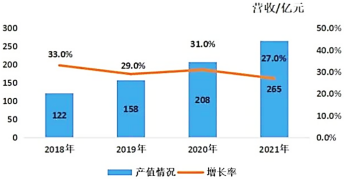
Revenue of China's Additive Manufacturing Industry from 2018 to 2021
5. Conclusions and Prospects
Since the emergence of 3D printing technology in the 1990 s, the printing of polymer materials has gradually focused on the printing of metal powder from the beginning, and a large number of new technologies, new equipment and new materials have been developed and applied. At present, the pace of information technology innovation continues to advance, industrial production is entering a new stage of intelligence and digitization, and 3D printing technology will be a powerful thrust for the development of industrial intelligence. In recent years, high-temperature alloy powder 3D printing technology has achieved certain results, and has a wide range of applications in the aerospace, biomedical, and automotive fields. The 3D printing industry is developing rapidly. The domestic industry revenue has reached 26.5 billion yuan, with an average annual growth rate of 30% in the past four years, and more than 100 enterprises above designated size.
At present, China's high-temperature alloy powder3D printing technology actually still faces many challenges: on the one hand, powder flowability and powder particle size distribution, interaction with heat sources, formation of layered microstructure, reduction of defects and better quantification of metallurgical characteristics; on the other hand, process parameter optimization, real-time monitoring, establishment of qualification standards, high-throughput testing and manufacturing of scaled-up components. The design of superalloy powders for 3D printing must take into account manufacturability, mechanical consistency, stability and cost. The bottleneck of materials is bound to affect the promotion of 3D printing technology, and 3D printing technology puts forward higher requirements for materials. The development direction of 3D printing superalloy powder materials mainly includes three aspects: first, to strengthen the relationship between material properties and structure on the basis of existing materials, further optimize process parameters, increase printing speed, reduce porosity and oxygen content, and improve the surface quality of printed parts; The second is to develop new materials to make them suitable for 3D printing, such as developing new superalloy powder materials with excellent corrosion resistance, high temperature resistance and comprehensive mechanical properties; the third is to revise and improve the technical standard system of 3D printing powder materials, and realize the institutionalization and normalization of high-temperature alloy material printing technical standards.
Six,3DPrint more traditional manufacturing considerations
Nanjing Arrow Stone Industry and Trade Co., Ltd. is a professional tool and fixture service provider engaged in mechanical processing and manufacturing, with excellent technical service team and strong supply service system.3DPrint products follow-up processing and traditional precision processing has a wealth of processing experience, in the field of m-level processing has an excellent reputation and perfect technical service program. 3DThe disadvantages of printing over traditional manufacturing and subsequent processing considerations are summarized as follows:
1) Project comparison
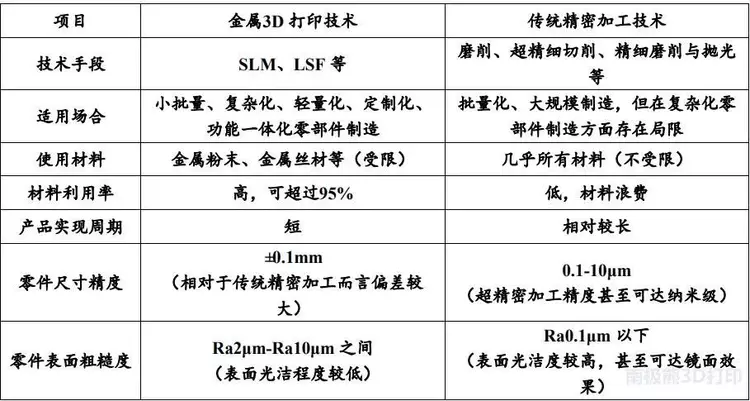
2)3D printing considerations
1. Tapping is recommended for threads, and direct printing is not recommended (including internal and external threads);
2, wall thickness, groove width, font size less than 0.5mm does not guarantee to print out;
3. The assembly parts need to be reminded to send the assembly drawing, which will be assembled before delivery. If not, they will not be responsible for assembly;
4. The clearance position of the product to be assembled shall be 0.15mm on one side;
5. If the local assembly requirements are high (such as bearing hole/diameter/plane assembly position), the machining allowance shall be set aside in advance, and then the machining allowance shall be matched through secondary finishing;
6. Some slender, thin-walled parts, shells and other structures will be deformed after high-temperature sintering of metal 3D printing. The advantage of metal 3D printing lies in complex structures, and the precision and surface effect are inferior to machining;
7, natural color surface pitting (Ra7 or so);
8, metal 3D printing material post-processing: the same as traditional materials can be subsequent secondary processing;
9, 50mm within the product printing tolerance of 0.1mm, larger product printing tolerance view paper for discussion;
10. For large products that need to be disassembled and printed, the disassembling position should be considered, the hole position should be avoided, the deformation amount and the alignment interface reserved for welding should be considered.
Nanjing Arrow Piercer Stone Technology Industry and Trade Co., Ltd.2023/05/10
Related News



